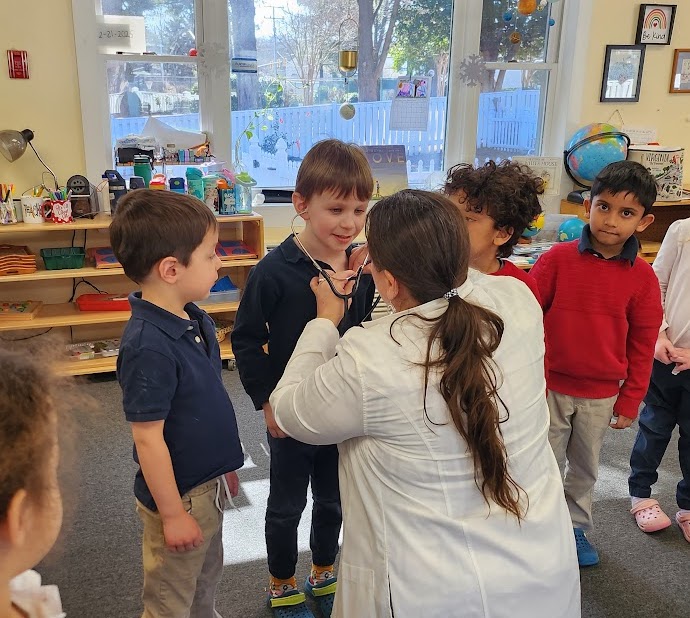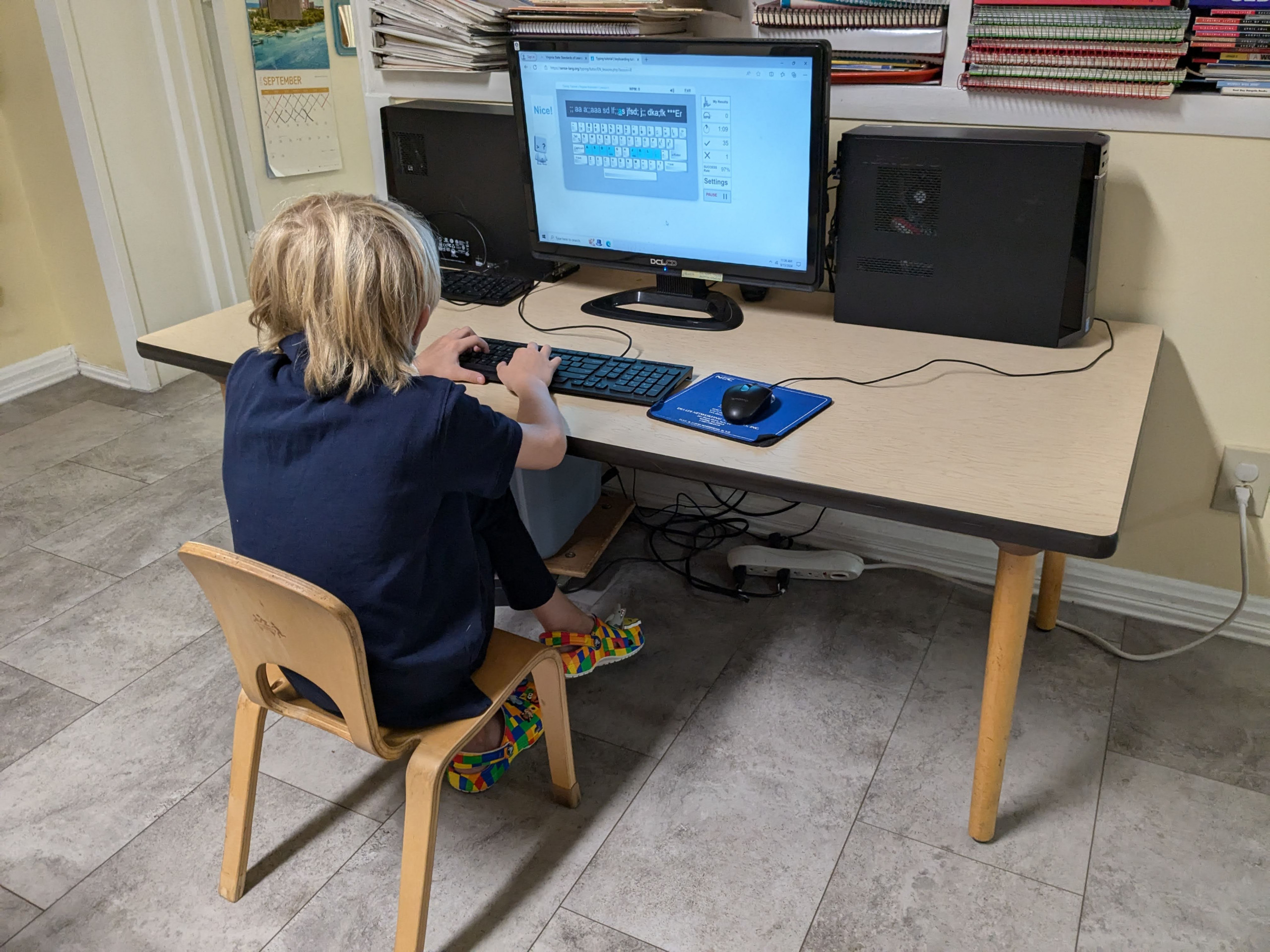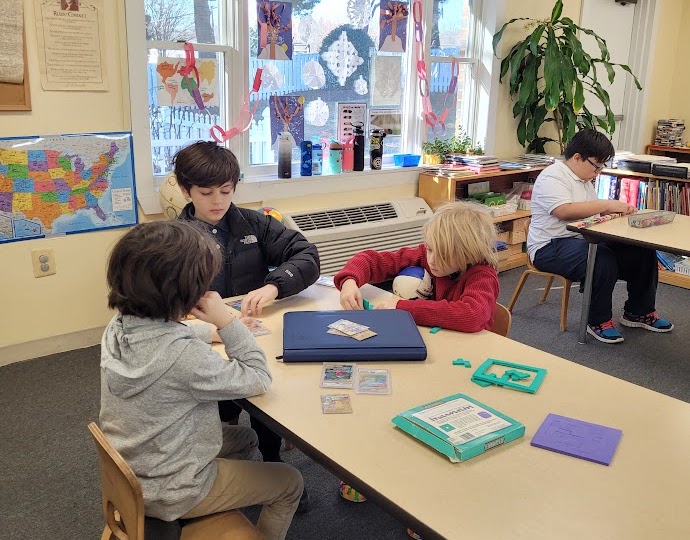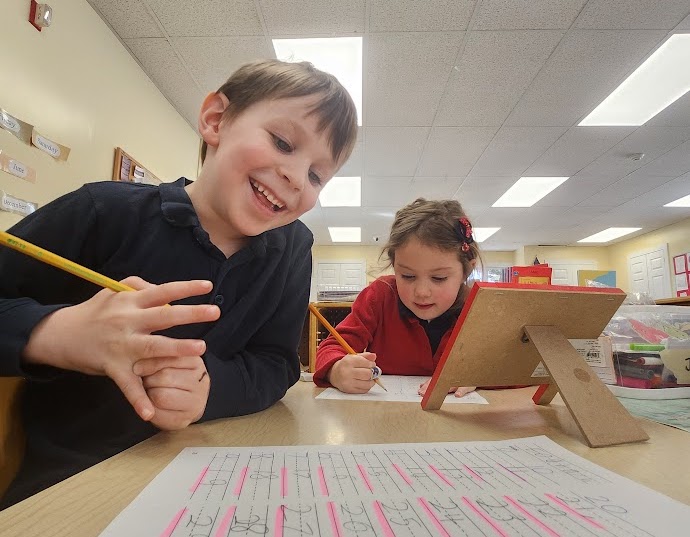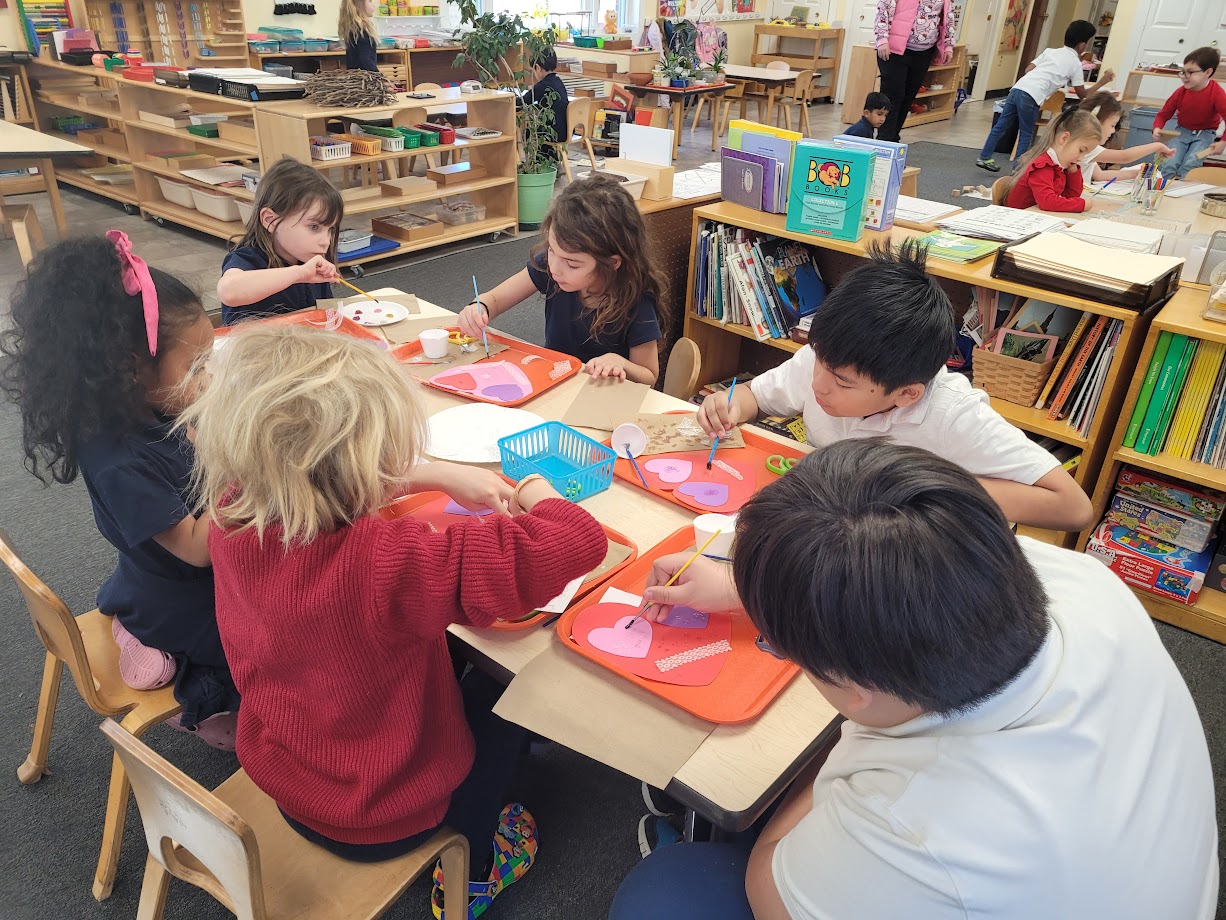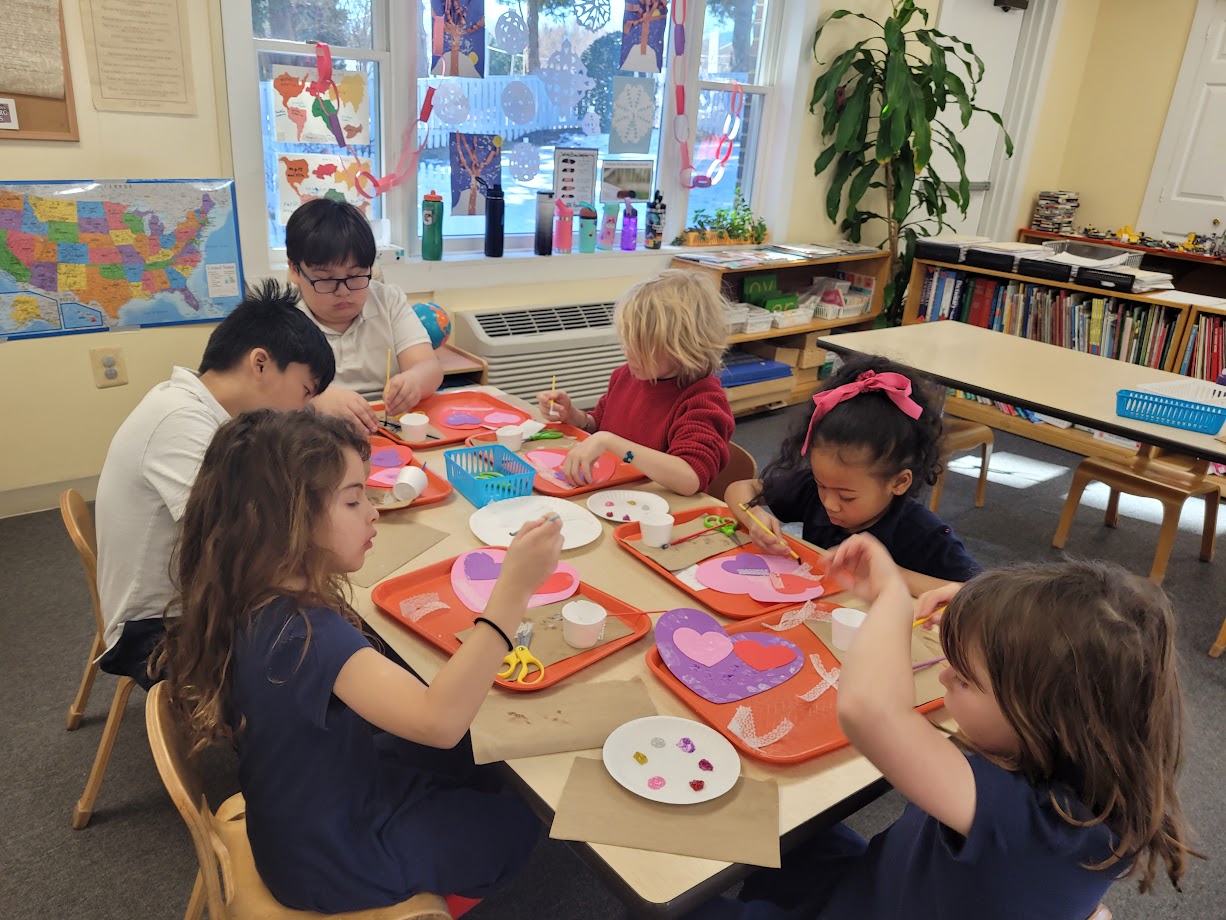Elementary
6-12 Years Old
Class Overview
Getting a head start in education

Elementary
Our Elementary program is designed to be a transitional classroom. Though Montessori Materials are used in areas of Language and Math, we aid them in the transition from Montessori to traditional education.
- Transition from a Montessori to a public school environment
- Preparation for success in traditional academic institutions
- Applying Montessori work ethic to other learning avenues
Sensorial
This area is designed to stimulate the visual, olfactory, auditory, and tactile senses. As they grow they will be introduced to activities that coincide with math related concepts such as Geometric shapes and the Binomial and Trinomial cubes.
Language
Montessori Language is an extension of the communication skills they have already acquired. Through conversations and stories they expand their language to a whole new level which sets them up for reading and writing. Pincer grip is an important development which will allow for the child to hold his pencil properly. This is learned through a variety of tools such as pin work. They pick up the curves and lines of each letter as they continue to excel. Eventually, they learn how to read with ease as they listen for the sounds of the letters and become experts at blending them together.
Math
Montessori Math is scientifically designed through didactic lessons. The activities are concrete and have a built in control of error. During this time the child will move on to quantity and association which leads to more complex works like addition and subtration. Each activity has an order of sequence.
Science
All science activities are hands on. This includes areas with plants, food, parts of the body, and other nature based lessons. These can be taught through group or individualized plans.
Geography
Geography is introduced through means of maps, cultures, and their peers. Many of these cultural lessons are taught through songs, pictures, puzzle maps, and parent volunteers.
Music and Movement/Art
Music and Movement allows for freedom of movement in a safe manner. They will begin with activities like walking the line and progress further into running, skipping, galloping, etc. When music is incorporated they distinguish patterns in rhythm and beats with bodily movements.

